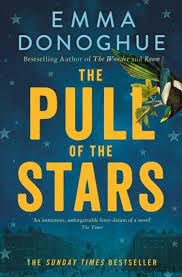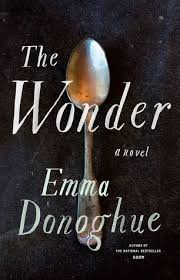
Frog Music, by Emma Donoghue was an interesting story, although as I read I continually wondered why the author was allowing her characters to complicate their lives so badly. It wasn’t until the end of the book that I realised the book was based on a true story. Emma Donoghue was obviously hamstrung by the facts.
I read Room a while ago and loved it. Frog Music was good, but for me, never reached the same levels. I think I stayed up all night reading Room until I finished the book, but read Frog Music over a week.
Frog Music is set in San Francisco in 1876 and tells the story of Blanche, a French exotic dancer and prostitute, who befriends (or is befriended by) Jenny, a pants-wearing frog-catcher. (Before you ask, Jenny sells the frogs to restaurants. Yes, to be cooked for people to eat. No, I haven’t eaten frogs, but I hear they taste like chicken. Enough about the frogs already). Jenny croaked, (sorry, I couldn’t help myself), after being shot by an unknown person early on in the story while hiding out with Blanche.
Blanche’s lover, Arthur, is also the father of their child, P’tit, who has been in care since he was a few weeks old. Arthur is nasty, and has an equally horrible friend, Ernest, who idolises Arthur and barely tolerates Blanche, although her ‘leg dances’ and prostitution bankroll all of them. I consulted Google to see what a ‘leg dance’ is, and still am not sure, but think a leg dance must be something like a can-can. The description of another dance performed by Blanche, reminded me of Lola Montez’s Tarantula, where the dancer strips, supposedly unaware of her audience as she tries to get a spider out of her clothes.
Blanche’s dancing and prostitution meant she was successful enough to have owned the six story Chinatown building she and Arthur lived in when Jenny ran Blanche while riding her bicycle, a Penny-Farthing. Somehow Blanche and Jenny, who has been in and out of jail for cross-dressing and is far and away the most interesting character, become friends. Jenny’s nosy questions caused Blanche to rethink some aspects of her life. In particular, Blanche seeks out the now one-year old P’tit and finds him living in squalor. She brings P’tit home, which throws all of their lives into a different kind of chaos.
The story, which goes back and forward constantly in time, becomes even more complicated at this point. By now I was feeling annoyed with Blanche for not booting Arthur and Ernest out of her home and hiring someone to look after P’tit while she got on with earning money. Even at the very worst times, Blanche had options which she did not take. Sigh.
Arthur caught smallpox and Ernest faithfully nursed him, while Blanche did her best to care for P’tit, all the while avoiding Arthur for fear of catching smallpox herself. Arthur survived, but fought with Blanche once he recovered, causing her to flee in fear of her life, leaving P’tit behind with Arthur and Ernest. Arthur sold Blanche’s apartment building out from under her, Jenny was killed by an unknown person, and Blanche suspected she was the intended victim. Meanwhile, Arthur and P’tit disappeared.
Frog Music started really well but the story quickly became far too complicated. I would have preferred to read more of Jenny than Blanche, and for Blanche to have made better choices. The sex was constant and unappealing. I get that Blanche was a prostitute and exotic dancer, but it was still hard to understand Blanche’s attraction to Arthur. Based on how good Room was, I would read another book by this author, but I wouldn’t recommend Frog Music unless you are very, very interested in the history of this particular unsolved crime, or of San Francisco during the gold-rush.





Recent Comments